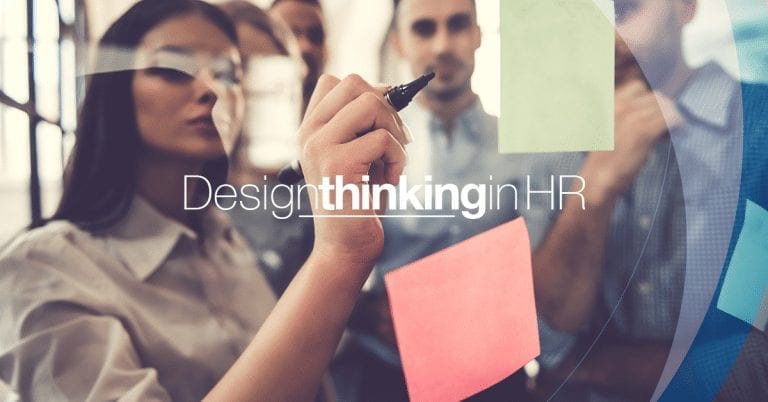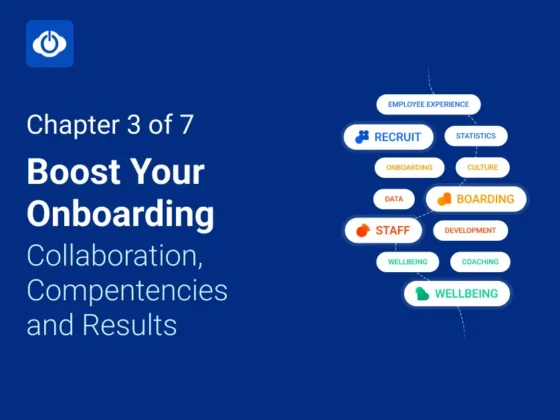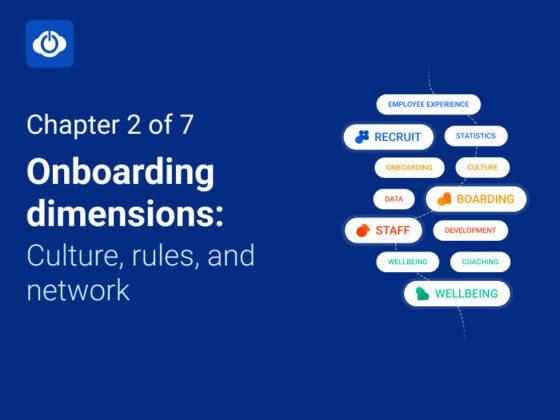What is Design Thinking?
Design Thinking is a methodology, where a company uses empathy and experimentation to find creative solutions to tackle problems in a solution oriented mindset.
It can be used in any field of work and it is a user-centric way of resolving complex problems.
How does Design Thinking apply in the HR department?
The ideology of Design Thinking can be applied in most aspects of a company structure. In recent years HR has become increasingly interested in introducing Design Thinking methodology, instead of a purely analytical process.
Thus more companies turn to Design Thinking when faced with complex problems. Design Thinking can be an optimal approach to simplifying the problem, and finding innovative and creative solutions.
Design Thinking in HR is used to better meet the needs of the customers and employees. In order to achieve an implementable and innovative solution, you must enter the process with an open mind to new ideas. This might change the way things have been working up until this point.
Be receptive, embrace original solutions and don’t punish failure. It’s all part of the process. And in many cases there is more to be learned from failure than success.
While tackling failure, there are many different approaches that can be used. You can take a entrepreneurial approach, where you try to overcome mistakes, in order to reach success in environments of high uncertainty. In this case failure and innovation go hand in hand as an iteration, rather than failure being the end of the road.
Use a focused approach when approaching a big project or problem. Break it into smaller and more achievable projects, while keeping the big picture in mind.
Working with a smaller and more attainable tasks doesn’t end up being overwhelming, and gets results faster.
Practical guide to Design Thinking in HR
-
Empathy
Here are some examples of questions you might want to ask yourself:
Do the employees:
- Feel appreciated and seen?
- Feel heard and taken seriously?
- Have a memorable employee experience?
- Feel empowered and are passionate about their work?
Start the process by writing down questions, where you merge your internal weaknesses with the goals and visions you have for the future of the company.
These questions represent the key phase in the Design Thinking process, which is EMPATHY.
Empathize with the employees and their needs. Start the process by looking at things from their perspective. By actively listening to them, you can create value in their work and improve their employee and human experience. Subsequently, the benefits that come from this change in the company will, in time, improve ROI, create a stronger brand (through the employees that become brand ambassadors) and set an environment where people are happy and proud of their jobs.
In order to gather the necessary information whilst remaining objective choose a simple tool. This can be a tool such as an organized brainstorming session with the employees. Or you might choose to do other things such as interviews, a journey map or develop personas. It is up to you and your needs to decide how much time and energy you want to invest in this phase.
In cognitive thinking there are are two thinking processes. Divergent and convergent thinking.
Divergent thinking refers to the creative way. This is where you come up with ideas and explore different possibilities, without being analytical about them.
Convergent thinking is the analytical part. Which is all about analyzing the ideas, improving them and taking decisions about the applications of the idea.
The empathy phase in Design Thinking is to be tackled with a divergent thinking approach, where volume is key.
-
Define
Since you understand the needs of your employees and have gathered a vast amount of data, you can start simplifying their lives. Think about what one of their core problems are, and start solving it.
This phase can be done by analyzing and synthesizing the data with a convergent thinking approach. This results in a human centered problem statement, that you can use further in this process. Aim for a problem statement that is rooted in human relations, and putting people above process and monetary returns.
What if the results of your analysis culminate in a complex, nearly unsolvable problem?
If this is the case, break it down into smaller pieces. Take one step at a time and remember that this is an agile process. You can always come back to your data, and redefine your problem statement. If you encounter problems or your findings lead you in another direction.
-
Ideate
You made it this far! You have gathered data and defined your problem, in a human centered form, and now it is time to free your creativity and ideate.
Think in a creative problem solving manner. Allow yourself to be prolific, think outside the box and outside of traditional approaches.
Take a divergent thinking approach and you will end up having several ideas. Which may as well be very different and original. This is a good thing. Do not limit yourself or your imagination.
The process can be kick started with several techniques such as Brainstorming, Braindumping, Worst Possible Idea, SCAMPER or Gamestorming.
When you aim to think outside of the existing parameters, you end up using your rational mind and your imagination. By using one or more of these tools.
One more tool to help is by having a diverse team working on this. Let them be empowered to find solutions and be part of the organization in a proactive way.
Give room to creativity and innovation, and be prepared to design the innovative system of the future. This can be accomplished by allowing creative freedom and not focusing on boundaries. Do not limit yourself with the way you are used to doing things and, most importantly, not punishing failure.
-
Prototype
You have now developed many ideas that can help you solve your problem. Think of it as divergent approach, when finding ideas, and convergent, when narrowing down through the multitude of choices. Find out which ones are feasible, implementable and offer an answer to your problem definition.
Now it’s time to filter the ideas until there are only a few or even one solution left on the table. When you have gathered the solutions it’s time to take action!
The solution(s) should be implemented/tested at a small scale. This can be done in a small team, a small target group or with a small number of employees.
It works as an iterative process, where the solutions are designed to better suit the defined users needs. Be creative and make this a fast and inexpensive process. It doesn’t have to look or work perfectly. It can be done with the help of rapid prototyping techniques. These include paper prototyping, sketching or story boarding.
-
Test
In the final stage of Design Thinking, the testing phase, you get to test the prototypes. So, until you reach a satisfactory result, designs are to be tested and refined at this stage. Make sure to not interfere or influence the test persons. Merely observe their natural interaction with your prototype.
The test team validates or disputes the assumptions from the prototyping phase (based on your core problem) and start prioritizing the feasible solutions. The initial prototype is upgraded or perhaps mixed with other prototypes to make a more defined and clear solution.
The new HR solution should be tested on a bigger scale with a more thorough and perfected prototype. Be open to constructive criticism, and receive it with a mindset in which there is always room for improvement. After the feedback, improve and adjust the product to be as close to a perfect solution as possible.
As a result, a good solution will be easy to implement, because it serves as a help for your core problem and it will develop organically.
Sum up
Iteration is the key word in Design Thinking.
Make sure to include the Empathy phase, which is the core of the process. Everything else is relative and depending on your needs.
Keep the process as easy as possible, and remember to be proactive and make quick decisions. Move away from the more traditional approaches, where all the stages take a long time and effort. In the Design Thinking methodology is important that you first define your problem. When you have a good idea, get creative in a fast and inexpensive way of testing your solutions.
For further reading and inspirations the following articles might be useful: See recruitment through the eyes of an applicant and Streamline the recruitment process and focus on what’s important.




